12 Best Software for Day Trading
Discover the 9 best software for day trading to boost accuracy, speed, and profits, perfect for traders seeking smarter, faster decisions.
.jpg)
You watch a price gap and your platform lags, and a trade you planned disappears. Choosing the right software and one of the Best Brokers For Day Trading affects execution speed, market data quality, charting tools, and how quickly you can act on indicators and scans.
This guide compares charting software, order execution, backtesting, automation, level 2 quotes, hotkeys, paper trading, and trade management so you can pick a setup that supports real-time charts, strategy testing, and risk controls, and move toward pro trading with a funded account. Ready to trade like a pro?
AquaFunded's funded trading program helps you earn a funded account by delivering consistent results with simple, platform-friendly rules, providing capital, clear risk limits, and practical support to scale your trading.
Summary

- Only about 10% of day traders are consistently profitable —a stark finding that shows process, a measurable edge, and strict risk management determine long-term success. This is where AquaFunded's Funded Trading Program fits in, offering funded accounts up to $400,000 and structured rules that make the process and limits explicit.
- New entrants face rapid attrition: 90% of day traders lose money in the first year, underscoring the importance of early risk controls and gradual scaling to avoid standard failure modes. AquaFunded's Funded Trading Program addresses this by providing evaluation paths with clear risk limits and a 48-hour payout guarantee.
- Platform choice directly affects execution quality; over 50% of day traders use specialized software, and competent platforms can reduce transaction times by up to 30%, translating into fewer missed fills and lower realized slippage. This is where AquaFunded's Funded Trading Program fits in, by consolidating execution metrics and supporting platform-friendly rules that reduce edge leakage.
- Advanced charting and tick-quality data are nonnegotiable, with 90% of successful day traders relying on advanced charting tools, making backtesting, replay, and live alerts critical for reliable intraday decision-making. AquaFunded's Funded Trading Program addresses this by aligning its evaluation and funded accounts with platform-friendly setups and backtesting workflows.
- Concrete risk rules improve longevity; for example, the guide recommends a hard daily loss ceiling (e.g., 3% of capital), placing a stop with every entry, and targeting at least a 1.5:1 reward-to-risk ratio so small mistakes do not compound. This is where AquaFunded's Funded Trading Program fits in, because it centralizes real-time risk controls and enforces consistent daily limits.
- Deliberate, time-boxed practice compresses learning, since intraday trading lets you see a setup's outcome dozens of times in a week. Yet, the average day trader lasts about 6 months, so structured reviews and focused experiments are necessary to break that cycle. AquaFunded's Funded Trading Program addresses this by offering sandboxed evaluation paths and payout terms that align progression with measured performance.
Pros and Cons of Day Trading
.jpg)
Day trading can deliver significant, near-term gains for skilled traders, but it also exposes you to concentrated risk, high costs, and intense psychological pressure; only a small fraction of entrants make it a sustainable way to trade. You should treat it as a professional pursuit that demands systems, discipline, and tools that reduce edge leakage and emotional mistakes.
Pros of Day Trading
1. Potential for High Returns
What matters most is that day trading amplifies short-term moves into meaningful profit when you have an edge and tight execution. You get to harvest intraday volatility instead of waiting months, and that compresses learning: you see the outcome of a strategy dozens of times in a week, so you can iterate quickly on signals, position sizing, and stop rules.
2. Independence and Flexible Work Setup
If you value control, day trading lets you set your routine and work from anywhere with low-latency connectivity. You choose instruments, time windows, and the intensity of your sessions, which is a genuine freedom compared with salaried schedules. That said, flexibility only helps if you can protect focus and establish boundaries between trading hours and the rest of life.
3. Faster Decision-Making and Pattern Recognition
Trading intraday forces you to improve quick, disciplined judgment under pressure. You learn to read order flow, interpret short-term market structure, and make probabilistic bets without overchecking every data point. Over months, that sharpened decision rhythm becomes a skill you can transfer to strategy design, risk controls, and trade automation.
4. Reduced Overnight Exposure
Keeping positions flat overnight removes a significant class of tail risk, such as earnings gaps or geopolitical shocks. For many traders, that means cleaner risk budgeting and simpler stop strategies. It also simplifies compliance with margin rules that penalize holding volatile positions through news events.
5. Liquidity and Technical Accessibility
High-liquidity instruments let you scale in and out without massive slippage, and modern broker APIs, charting engines, and market data make setup accessible at modest cost. That infrastructure lowers the barrier to entry for technically minded traders who can combine execution, backtesting, and live monitoring in a single workflow.
6. Rapid, Actionable Feedback Loop
You get immediate performance signals. A failed setup shows up in minutes rather than weeks, which accelerates learning cycles when you keep rigorous logs and conduct review sessions. When you treat results as experiments, you can prune losing setups and amplify what works faster than in longer-term investing.
Cons of Day Trading
1. High Risk and Chance of Large Losses
The promise of quick gains comes with the reality of quick losses, because leverage and frequent sizing changes amplify errors. That stress compounds when a string of losing trades forces you to increase risk to chase returns, which is the fastest route to account blowups.
2. Very Low Long-Term Profitability Rates
This is not theoretical; it is empirical: Only about 10% of day traders are consistently profitable." Quantified Strategies, 2025, which means consistency is rare and requires a process, measurable edge, and strict risk management rather than hope.
3. Short Survivor Lifespan for New Traders
Many people treat day trading like a weekend hobby, then burn out when results lag. Quantified Strategies, 90% of day traders lose money in the first year, a stark signal that early losses and poor risk controls are the most common failure modes for new entrants.
4. Time Sink and Ongoing Commitment
Successful intraday trading is a full-time craft. You will spend hours building models, scanning tick-level data, tuning execution, and reviewing trade journals. If you cannot commit to continuous improvement, the activity quickly becomes expensive entertainment rather than a reliable income source.
5. Emotional Strain and Cognitive Fatigue
It is exhausting to make dozens of consequential decisions under time pressure. The emotional swing of wins and losses can produce impulsive behavior, revenge trading, and decision paralysis. I have seen the pattern repeat: traders with fractured focus make avoidable mistakes, and that is when small losses compound into significant drawdowns.
6. Transaction Costs and Fee Friction
Commissions, spreads, data fees, and slippage erode gross edge quickly when you trade frequently. If your setup does not minimize hidden costs and you do not measure slippage, your performance numbers will look better on paper than in the account. Precision in cost accounting is non-negotiable.
When traders rely on familiar workarounds like scattered spreadsheets and manual stop adjustments, it feels natural and low-friction at first. Still, these approaches create hidden costs as trade volume and complexity increase. Platforms that centralize real-time fills, automate risk controls, provide transparent fee reporting, and deliver low-latency data reduce those frictions, and solutions like AquaFunded offer features such as consolidated execution metrics and built-in risk limits, enabling traders to scale decision quality without adding administrative overhead.
This problem appears across both novice and experienced traders: without focused, distraction-free practice blocks, decision quality degrades. Traders who commit to uninterrupted work sessions and structured reviews maintain steadier execution; the failure point is always attention fragmentation, not talent. Treat practice like lab work: isolate variables, run controlled experiments, and log outcomes.
Think of day trading like sprinting on a narrow track, where a single misstep carries outsized cost; mastering it requires technical tools, mental conditioning, and relentless cost discipline.
The following section will pull back the curtain on software that either protects your edge or quietly eats it alive, and that distinction matters more than most people realize.
12 Best Software For Day Trading
Pick the platform that matches the edge you trade with, because execution, data quality, and workflow fit determine whether a setup helps you or holds you back. Below are the 12 platforms I use as reference points, each with a tight description, practical pros, and blunt cons so you can choose by capability, not by hype.
According to StockBrokers.com, over 50% of day traders use specialized trading software. Dedicated platforms are the baseline, not an optional extra.
1. AquaFunded
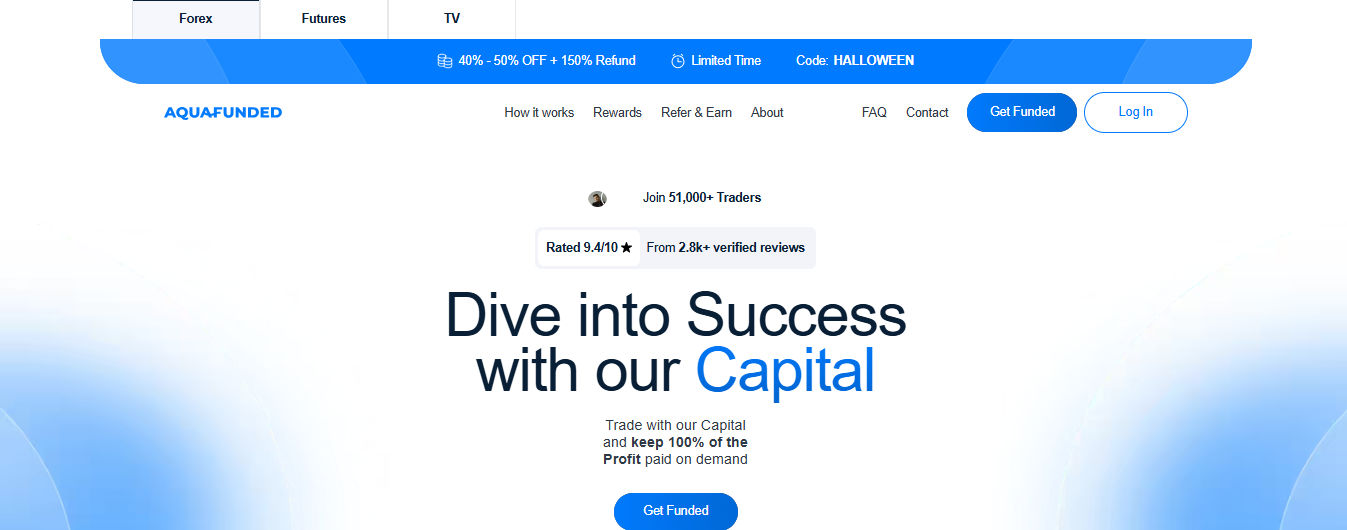
AquaFunded lets traders scale skill into capital without risking personal funds, offering funded accounts up to $400,000, flexible rule sets with no hard time limits, and profit splits as high as 100 percent. Traders can choose between instant funding and a customizable evaluation path, and receive fast payouts backed by a 48-hour guarantee.
2. Interactive Brokers
Interactive Brokers provides an institutional-grade toolkit, from Trader Workstation to direct market access and algorithmic routing. It is built for traders who need deep customization, professional order types, and tight execution economics on large volumes.
Pros
- Very low margin rates and tight execution quality.
- Broad access across global products and advanced algos.
- Powerful desktop trading with extensive automation.
Cons
- The mobile application can lag under heavy data loads, a recurring constraint for traders shifting to mobile-first workflows.
- Limited access to IPO allocations for retail customers.
3. Webull

Webull targets mobile-first traders with a clean interface, surprisingly advanced charting and screening, and occasional access to IPOs. It leans toward retail convenience, but some asset classes sit outside the main app experience.
Pros
- Commission-free stocks, options, and ETFs with accessible tools.
- Fast onboarding and attractive charts for active traders.
Cons
- Crypto trading requires a separate app, adding friction.
- High fees on individual bonds and many foreign-stock trades make diversification more expensive.
4. Charles Schwab (thinkorswim)

Charles Schwab packages the thinkorswim suite as a professional-level desktop platform with deep charting, integrated macro data feeds, and option analysis modules that serious traders will appreciate.
Pros
- Access to thinkorswim’s advanced analytics and multiple platform flavors.
- No minimums or platform fees to start.
- Extensive third-party research and educational resources.
Cons
- The mobile interface feels clumsy compared with the desktop experience.
- Fractional share support is limited relative to other brokers.
5. Robinhood

Robinhood emphasizes a streamlined mobile experience and low costs, with one of the broader cryptocurrency catalogs among mainstream brokers; it targets simplicity first, breadth second.
Pros
- Clean, low-friction mobile app and commission-free trading.
- Large crypto selection for retail-focused strategies.
Cons
- Weak third-party research and limited fixed-income options, like no individual bond trading, constrain multi-asset strategies.
- The simplified UI can hide execution details that advanced traders need.
6. Fidelity

Fidelity balances trading power with strong education and customer service; Active Trader Pro makes bracket and visual orders intuitive, and Fidelity avoids payment-for-order-flow compromises that concern execution-focused traders.
Pros
- Solid execution quality, extensive research providers, and institutional-grade tools for new-to-intermediate traders.
- Helpful features like a live margin calculator and high interest on idle cash.
Cons
- Broker-assisted trades carry higher fees.
- Some advanced customization requires learning the desktop tools.
According to StockBrokers.com, day trading software can reduce transaction times by up to 30%; the time savings from a competent platform directly translate into better fills and tighter realized slippage for short-horizon strategies.
7. E*TRADE
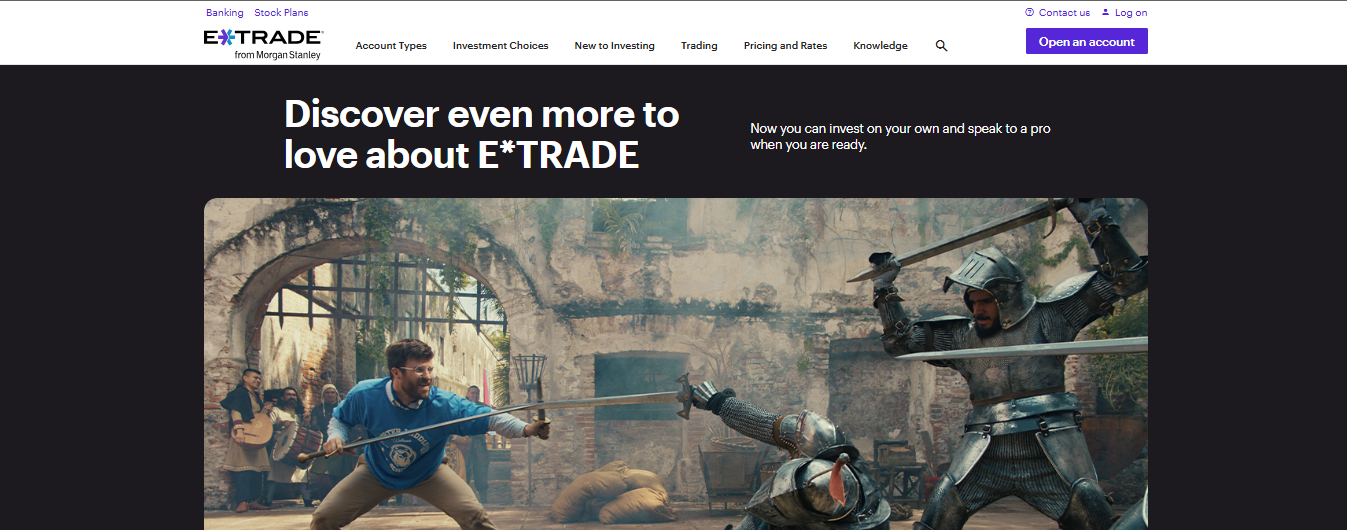
E*TRADE combines a friendly mobile app, competitively priced options trading, and a wide product roster, built to appeal to traders who value usability and a reasonable level of sophistication.
Pros
- Commission-free trading plus straightforward tools.
- Volume-based discounts for heavy options traders.
Cons
- Fractional shares limit position-sizing flexibility for small accounts.
- Margin rates are trending higher than those of low-cost rivals.
8. Public
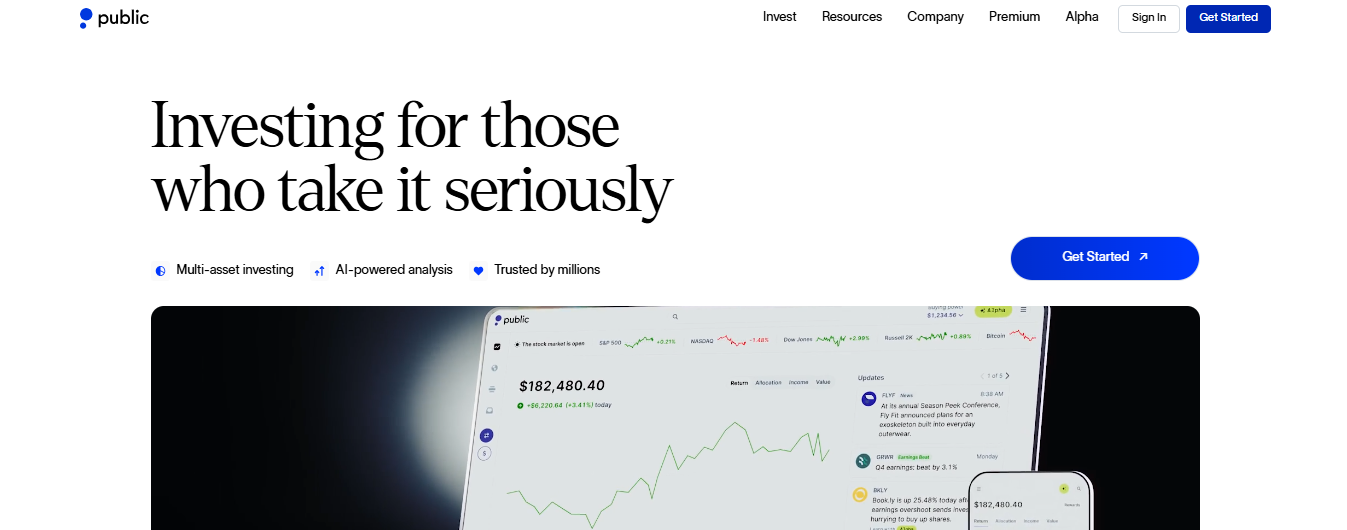
Public trades on social and simplicity, rewarding some options activity with rebates and exposing traders to a broad set of alternative assets in a highly approachable mobile experience.
Pros
- Commission-free trading with option rebates under certain conditions.
- Simplified onboarding and exposure to alternative securities.
Cons
- Limited advanced tools and screeners for systematic traders.
- Execution quality can lag compared with pro-grade platforms.
9. TradeStation
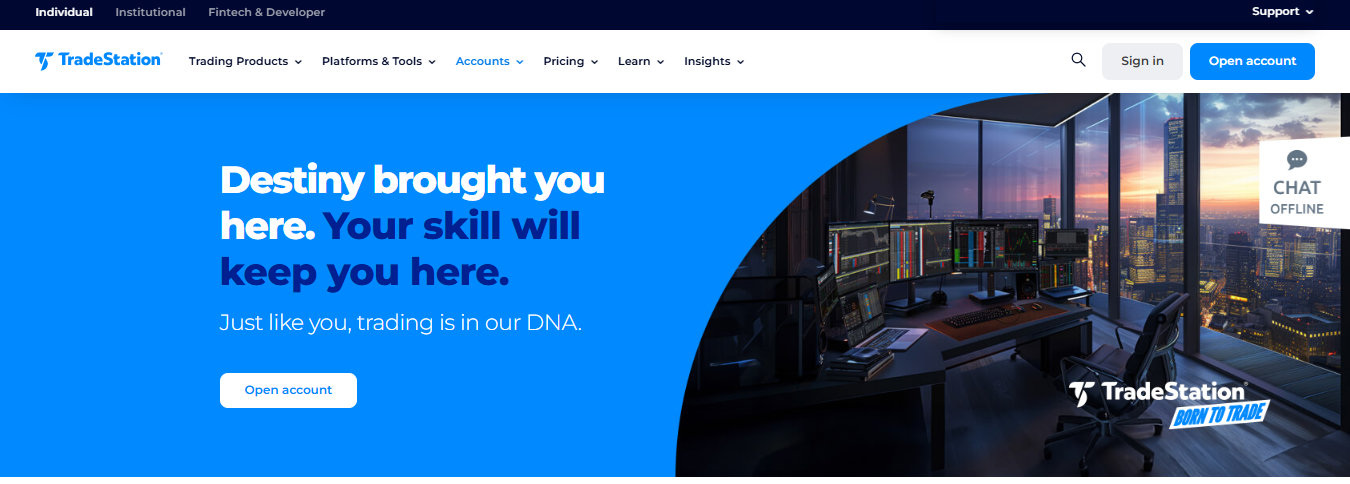
TradeStation is tailored to the professional and quant trader who codes indicators or runs high-volume strategies, with deep backtesting, sophisticated strategy deployment, and a detailed margin and portfolio view.
Pros
- A strong feature set for options traders and systematic developers.
- Portfolio Maestro and extensive risk analysis tools.
Cons
- A steep learning curve that rewards persistence.
- Relatively thin fixed-income research and fewer simple stock-screening shortcuts.
10. NinjaTrader

NinjaTrader focuses on futures and forex traders who need low-latency charting, advanced order types, and a scriptable environment for automated systems. It is a practical choice when you want to own your execution stack.
Pros
- Powerful custom strategy scripting and robust market replay tools.
- Focus on futures and high-frequency-friendly workflows.
Cons
- Setting up and configuring the data feed requires time and technical comfort.
- Broker connectivity options can add complexity for cross-asset traders.
11. Tastyworks
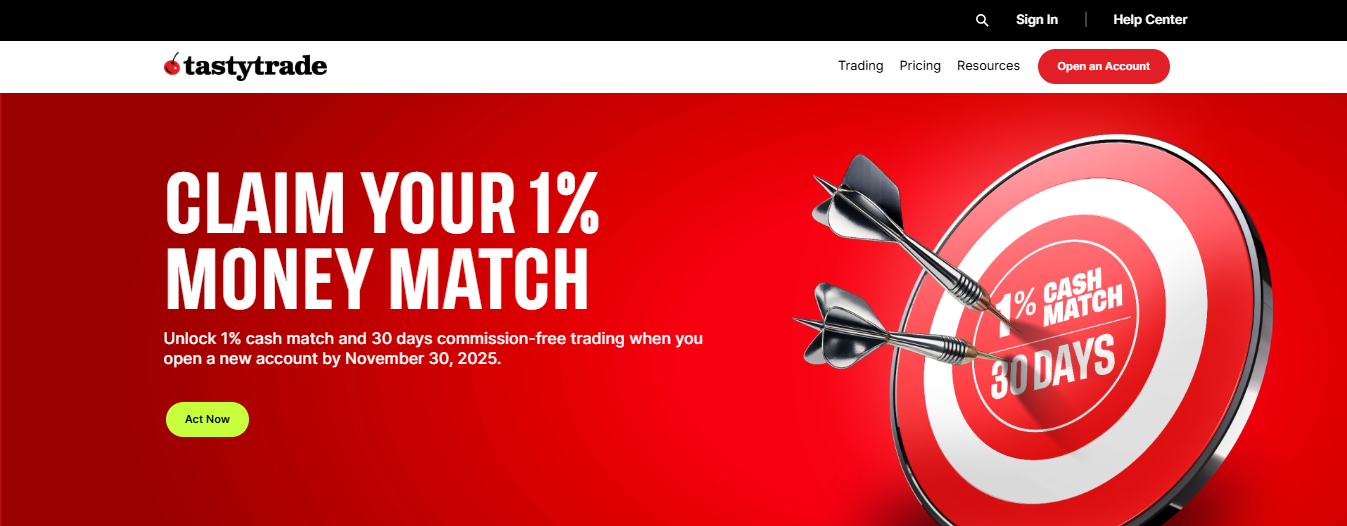
Tastyworks, born from an options-focused education network, prioritizes options trading ergonomics, rapid trade adjustments, and cost-effective contract pricing for active derivatives traders.
Pros
- Designed around options flows and quick strategy adjustments.
- Straightforward fee structure for active options traders.
Cons
- Less emphasis on equities, charting depth, and global market access.
- Tools skew toward options so that multi-asset traders may need companion platforms.
12. Lightspeed

Lightspeed serves active, professional traders who need ultra-low-latency routing and customizable order execution, especially scalpers and high-volume traders for whom every millisecond counts.
Pros
- Execution and routing are optimized for speed and control.
- Professional-grade order types and advanced market access.
Cons
- Higher platform and connectivity costs are aimed at professional accounts.
- Not designed for casual or part-time traders.
When mobile responsiveness becomes a primary constraint, the pattern is consistent: traders who switch to mobile-only execution lose edge because streaming updates and UI responsiveness cannot match the desktop environment under heavy load, so a hybrid workflow is usually the safer path. That failure mode explains why many experienced traders insist on a stable desktop host plus a mobile companion rather than relying on a single app.
It’s exhausting when a promising setup collapses because one app lags or one asset class is locked behind a separate service; prioritize platforms that keep execution, data, and order management consolidated so your attention is on price action, not app switching.
What comes after matters more than another checklist.
Related Reading
- Is Day Trading Illegal
- How Risky Is Day Trading
- Can You Make Money Day Trading
- Is Day Trading A Good Side Hustle
- How To Find Stocks For Day Trading
- How To Trade And Make Money
- Do You Pay Taxes On Day Trading
- How Long Does It Take To Become A Profitable Day Trader
- Can Day Trading Be A Career
12 Tips for Day Trading Like a Pro
.jpg)
These are the practical habits I follow to trade like a pro, rewritten into twelve concrete rules you can act on today. Each rule gives an apparent trigger, the operational change you should make, and the emotional or executional reason behind it.
1. Set a hard daily loss ceiling
Treat a daily loss limit as nonnegotiable. Pick 3 percent of your capital or a dollar amount you can stomach, and stop trading when you hit it; for new traders, start far smaller, for example, risking 0.1 percent per trade with a 0.3 percent daily cap until you stabilize. This keeps one nasty session from wrecking future opportunities, and it forces discipline when emotions try to push you back into the market.
2. Trade to match both the market and your mindset
Decide before you log in what market conditions you will trade and how your current mental state alters those rules. If you are anxious, tighten targets or sit out marginal setups; if calm and sharp, accept slightly wider ranges or take planned partial entries. The trick is self-awareness: notice how impatience or overconfidence shifts your breaking point, then codify an adjustment so emotion becomes another measured input, not a sabotage.
3. Place a stop with every entry
Always send the stop order as soon as you enter the market. If your platform cannot place a stop order at the same time as the fill, switch to software that can. Letting a trade run unprotected is not strategic flexibility; it is surrendering your best risk-control tool and inviting catastrophic loss.
4. Demand at least a 1.5 to 1 reward-to-risk ratio
Only pull the trigger when the entry, stop, and target give you 1.5:1 R:R or better, unless your system explicitly supports a much higher win rate. Plan for the R:R you need across many trades, not for a single theoretical outcome, and accept early exits when price structure dictates them so your realized R:R tracks your plan.
5. Keep targets realistic within typical price movement
Check recent intraday ranges and confirmed directional runs, then size targets to fit what the market actually does. If a stock’s hourly swings are usually $0.50, a target requiring $1 of movement is unlikely without a structural break. Use historical run lengths to confirm you can hold through the time and churn it will require.
6. Favor tight stops over generous ones
Small, precise stops preserve reward potential and let you recycle capital faster. If the instrument routinely moves $0.10 per session, a $0.05 stop allows repeated, higher-R:R opportunities; bloated stops turn multiple possible wins into a single long wait with a low probability of paying off.
7. Trade reality, not wishful scripts
If price action contradicts your thesis, get out. Hope is not a strategy. Maintain a clear boundary for what would prove your idea wrong and act on that evidence instead of arguing with the tape.
8. Treat stop hunting as part of the cost structure
If your stop is hit, accept the loss and look for the following clean setup. Frequently triggered stops are usually a sizing or timing issue, not a conspiracy. If you repeatedly see false stopouts before a big move, adjust entry criteria or wait for confirmation, then re-enter when the retracement stabilizes.
9. Narrate the trade aloud as you wait and act
Run a simple script in your head and speak: which setup you are seeking, exact price levels, and your exit reasoning. This continuous commentary reduces impulsive entries and keeps attention anchored on the plan rather than on distractions that lead to random trades.
10. Prioritize quality setups over quantity of trades
Be eager for the market to hand you one high-quality opportunity rather than forcing five mediocre ones. One good trade a day, managed by rigid R:R and position sizing, outperforms the compulsion to be constantly active.
11. Weekly review with focused habit repair
Each week, audit trades, tabulate recurring mistakes, then pick the most costly error and design a small experiment to eliminate it. Short, repeatable experiments produce faster improvement than trying to overhaul everything at once.
12. Keep trading pleasurable and curious
Maintain gratitude for the craft and use each trade as a source of feedback for both strategy and psychology. Enjoying the process reduces the destructive stress around wins and losses and makes disciplined choices easier to sustain.
Most traders treat risk limits as a suggestion rather than a system. That familiar approach works early on because it feels flexible, but as trade frequency and account size grow, manual limits fragment, errors multiply, and elastic discipline becomes inconsistent. Platforms like AquaFunded’s funded trading program centralize real-time risk controls, enforce consistent daily limits, and automate payout rules so traders preserve their edge while scaling.
A few hard truths to hold while you practice: according to Quantified Strategies, only about 10% of day traders are consistently profitable. Consistency is rare and requires systems and behavioral controls, as well as Quantified Strategies. The average day trader lasts only about 6 months, which shows how quickly poor rules or impulsive sizing end careers; use those facts to justify slow, measured progress rather than rapid overreach.
When frustration builds because you keep repeating the same mistakes, remember the fastest gains come from cutting errors, not hunting for a holy signal. That single habit change steadies accounts faster than any new indicator.
Turn your trading skills into substantial profits without risking your own capital. AquaFunded gives you access to accounts up to $400K with the most flexible trading conditions in the industry, no time limits, easy-to-achieve profit targets, and up to 100% profit split through our funded trading program.
The next choice you make about platform and workflow will reveal hidden trade-offs you did not expect.
How to Choose the Best Day Trading Platforms
.jpg)
Choose a platform that aligns with how you trade and how you learn, then score candidates based on execution reliability, workflow clarity, and the real cost of using the service. Focus on tangible fit: can you place protected orders quickly, read live price action without lag, practice in a safe sandbox, and see every charge before it hits your account?
1. User-Friendly Interface
A straightforward, lightweight interface saves attention and prevents mistakes under pressure. Look for predictable layouts, obvious order buttons, and the ability to custom-arrange panels so your eyes land where they need to. Mobile and web views should mirror each other, so switching devices does not force you to relearn where things live. The difference is like driving a familiar car versus one with a hidden handbrake; one lets you react, the other forces you to fumble when seconds matter.
2. Educational Resources
Does the platform teach you, or only assume you already know? Prefer platforms that pair structured lessons with hands-on practice, including guided modules on risk rules, options basics, and standard intraday setups. Demo or paper-trading accounts are nonnegotiable because practicing the rhythm of entries, stops, and exits without risking capital accelerates competent behavior. If you start with a small capital, pick the broker whose curriculum and stepwise drills let you graduate from simulated to live accounts with measured checkpoints.
3. Research and Analysis Tools
Advanced charting, live alerts, and fast scans should not feel like optional extras; they are the core tools you use every session. When choosing, verify the quality of the tick data, the historical depth, and whether indicators run locally or on the provider’s servers, as these factors affect latency and consistency. According to StockBrokers.com's 2025 survey, 90% of successful day traders rely on advanced charting tools. That statistic underlines why chart power and customization matter more than glossy UI themes. Also, confirm backtesting and replay capabilities so you can validate ideas on exact intraday price paths, not just daily bars.
4. Customer Support
The familiar approach is to rely on email tickets because they're cheap and require no extra steps. Still, the hidden cost emerges when a market-moving problem needs immediate help and response times stretch into minutes, leading to slippage or missed exits. Look for multi-channel support, published service-level targets, and a track record of fast incident response during volatile sessions. If support feels reactive or slow, treat that as a material execution risk.
5. Costs and Fees
Evaluate the whole cost picture, not just per-trade commissions.
Commission Fees
Commission structures vary: zero-commission translates into savings only if spreads, routing quality, and payment-for-order-flow do not quietly worsen your fills. For frequent traders, measure realized slippage over a sample week to estimate actual trading cost.
Account Minimums
Low or no minimums let beginners start small and iterate without artificial pressure to scale before their process is proven. If you plan systematic size growth, confirm margin rules and how minimums evolve as you scale.
Hidden Fees
Search the fine print for inactivity charges, market data subscriptions, API access fees, and withdrawal costs. These line items quietly erode edge when you trade frequently or experiment with automated strategies.
Promotions and Bonuses
Sign-up credits and fee waivers are helpful, but read the conditions: some bonuses lock you into volume or withdrawal windows that distort early behavior. Use promotions to test a platform, not as the reason you choose it.
6. Execution Speed and Reliability
If your strategy depends on milliseconds or tight fills, execution architecture matters more than bells and whistles. Test order-to-fill timing during genuine volatility windows, and ask about colocated routing, supported order types, and how the platform behaves under heavy data loads. Per StockBrokers.com (2025), day trading software can reduce transaction times by up to 30%; that kind of speed gain translates directly into fewer missed fills and lower slippage when you need it most. Also, pay attention to how the platform surfaces partial fills and rejections so you can act without guesswork.
7. Integration and Automation
If you plan to backtest, automate, or run screeners, confirm API stability, historical data access, and whether execution hooks respect your risk rules. This is where small, manual workflows break at scale: scripts fail when a provider changes endpoints, or data timestamps shift and invalidate historical tests. Pick platforms that document changes, offer sandbox APIs, and show a changelog.
Status quo disruption
Most traders tolerate manual spreadsheets and scattered alerts because that setup is familiar and requires no new tools. That approach works at first, until account size or trade frequency grows and the fragmented workflow consumes time, increases errors, and hides actual costs. Solutions that centralize risk controls, transparent fee reporting, and consolidated execution logs reduce that friction, letting traders recover minutes per trade and preserve decision quality as activity scales.
When choosing, score candidates on those seven dimensions and run a short, time-boxed trial with a checklist: place simultaneous stop entries, simulate a margin call event, export fills for slippage analysis, and test support response during high volume. That small experiment reveals more truth than a month of reading promos.
There is one question every checklist misses, and the answer changes everything.
Related Reading
- Can Day Trading Make You Rich
- Best Moving Average For Day Trading
- How Much Can You Make Day Trading With $1,000
- Day Trading Technical Analysis
- Day Trading Momentum Strategy
- Day Trading Futures For A Living
- Day Trading Setup
- Day Trading Goals
- Automated Day Trading
- Day Trading With AI
- Day Trading Success Rate
Join Our Funded Trading Program Today - Trade with our Capital and Keep up to 100% of the Profit.
Choose a funded program that protects your process while enabling you to scale, and I encourage you to take a hard look at AquaFunded as a practical way to convert your skills into reliable capital access. Shop carefully, because some providers advertise the funded trader program, empowering traders worldwide to trade up to $600,000 on a TFT account. And others promote. The Funded Trader Program - Empowering Traders Worldwide, Receive up to 95% of the earnings., So pick the program whose account sizes, payout terms, and rule set match your execution style and risk plan.
Related Reading
- Day Trading Checklist
- Day Trading Statistics
- Best Markets For Day Trading
- Best Day Trading Strategies That Work
- Day Trading vs Dropshipping
- Day Trading vs Long-Term Investing
- Best Day Trading Indicators


